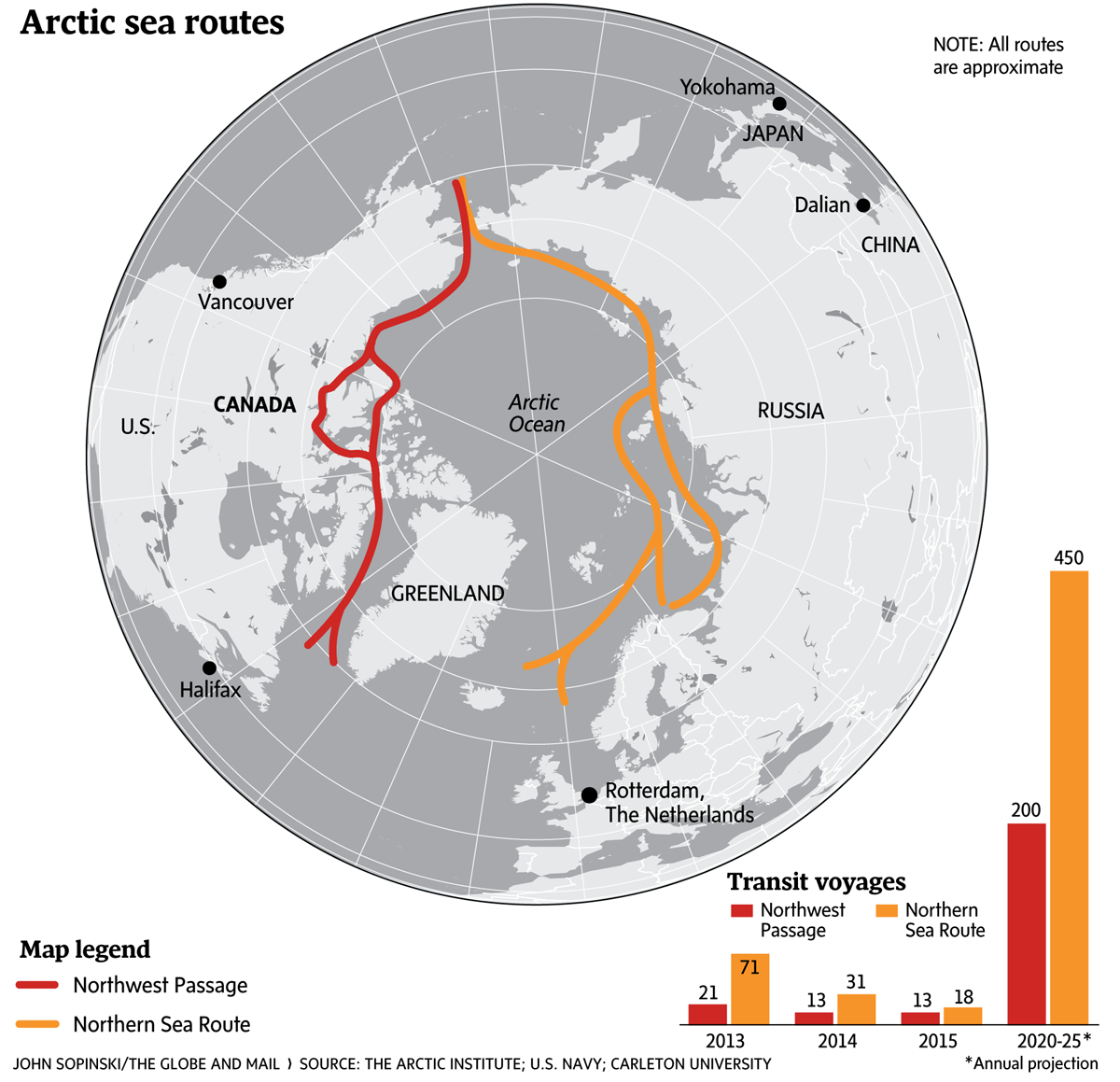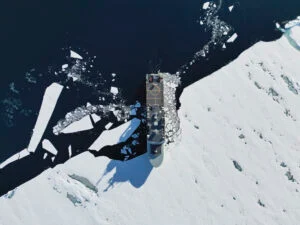
Exploration
Subterranean trailblazers
Caving: The ultimate underground sport
- 5055 words
- 21 minutes
This article is over 5 years old and may contain outdated information.
Mapping

As the Arctic warms due to climate change, China has expressed its intention to use the Northwest Passage for cargo shipping.
The passage—which is opening as Arctic sea ice vanishes—would be a much quicker approach to transporting goods, with Chinese reports estimating it to be 30 per cent faster than using the Panama Canal, the traditional route for connecting the Atlantic and Pacific oceans. It would also offer an alternate option to the North Sea Passage, which is regulated by Russia.
“Once this route is commonly used, it will directly change global maritime transportation and have a profound influence on international trade, the world economy, capital flow and resource exploitation,” Liu Pengfei, a spokesman for China’s Maritime Safety Administration, told reporters last week.
China is becoming a major investor in the north, with a $2 billion mining investment in Greenland and a free trade agreement with Iceland—the first signed free trade agreement between China and a European country.
But China is also looking for quicker ways to transport manufactured goods. The only problem is the question of Northwest Passage governance.
Canada claims ownership of the waters, citing the historical importance of the region.
Joseph Pickerill, a spokesman for foreign minister Stephane Dion, said there should be no presumptions of right of transit in the Northwest Passage.
“We welcome navigation that complies with our rules and regulations. Canada has an unfettered right to regulate internal waters,” Pickerill told Reuters in an email.
The matter remains up for debate, though China claims ships in the Northwest Passage will be bearing the Chinese flag soon.
Are you passionate about Canadian geography?
You can support Canadian Geographic in 3 ways:

Exploration
Caving: The ultimate underground sport

People & Culture
As the climate heats up, so do talks over land ownership in the Arctic. What does Canadian Arctic Sovereignty look like as the ice melts?

Science & Tech
As geotracking technology on our smartphones becomes ever more sophisticated, we’re just beginning to grasps its capabilities (and possible pitfalls)

People & Culture
Uprooted repeatedly by development projects, the Oujé-Bougoumou Cree wandered boreal Quebec for 70 years before finding a permanent home. For some, the journey continues.